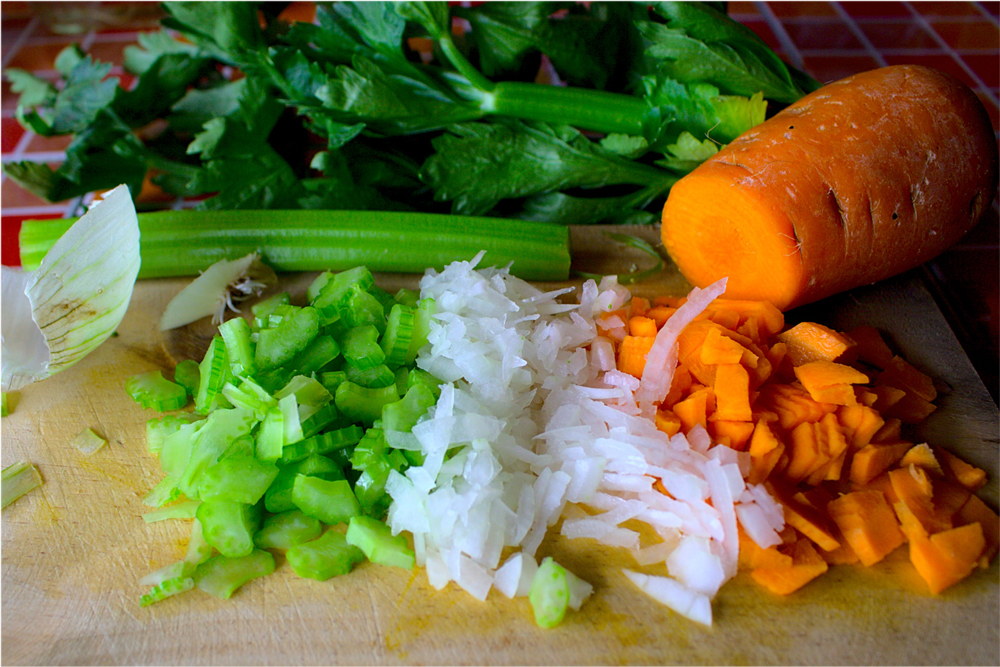
Teaching Soup Building Block Basics is Good for the Soul and Culinary Students’ Education
05 March 2024Building students’ confidence by stacking one foundational concept onto the next.
By Warren Leigh, culinary professor, cater, consultant and retired restaurant operator
Feedback & comments: This email address is being protected from spambots. You need JavaScript enabled to view it.
 What do a child’s building blocks and culinary education have in common? Blocks in both scenarios are one piece by themselves but put together they create something bigger. The blocks of a student’s culinary education are foundational skills that build upon each other as they go through their education to turn a cook into something bigger.
What do a child’s building blocks and culinary education have in common? Blocks in both scenarios are one piece by themselves but put together they create something bigger. The blocks of a student’s culinary education are foundational skills that build upon each other as they go through their education to turn a cook into something bigger.
Foundational skills are required for different recipes and dishes. Instead of preparing class lessons by grouping recipes, instructors may consider creating classes that simplify and teach one skill in one class and then take that skill to another level in another lesson or lab. Teachers can stand back and watch the culinary arts building blocks stack on each other reinforcing foundational skills as new skills are being forged and put into place. And the more we reinforce the skill sets from previous lessons, the more confidence is gained that will build students’ foodservice future.
The building blocks of stock to roux
Here is an example from my classes on teaching stocks, soups and sauces to exemplify how skills are like building blocks and by teaching them in an organized and stackable way, students quickly learn and retain valuable knowledge.
I first teach how to make a basic vegetable stock. I let the class know the preparation method and procedure will be the same time and time again.
- Sauté mirepoix
This crucial concept is discussed in detail. I explain the impact on the flavor quality and do a taste comparison of broth with under-cooked mirepoix and the full-flavored broth with properly sauteed vegetables. I use the acronym WTFL, What To Look For. The WTFL for sauteed mirepoix is a soft, tender and sweet fully cooked vegetables. - Add liquid
- Add sachet, here we discuss various aromatics and how they impact the final product
- Bring to a proper boil and turn down to a simmer.
Then I move on to the procedures of making a minestrone soup:
- We make the same vegetable stock from the previous class but add more vegetables based on the recipe and use the same WTFLs.
- We add the sachet and noodles and bring them to a boil and simmer.
- The class discusses the option of cooking the pasta in the soup using a conical strainer and why it should be removed and added back at service. Pro techniques and skills are important and reinforce the Method of Preparation or MOP process.
The next step is a thickened puree of zucchini stock.
- It’s the same basic vegetable stock. We are repeating skills and building confidence.
- We add the pureed zucchini
- We then discuss thickening methods such as adding potatoes, white beans or both.
I move to making a specific stock - corn stock for corn chowder.
- We cook whole corn ears in the basic vegetable stock, remove the kernels then add the cobbs back. We are repeating skills and building confidence.
- We then choose how to thicken the soup with either a velouté/roux or puree or both and why.
- Finally, we talk about how to finish, with either cream or milk, and when.
Chicken stock is next.
- We make a vegetable stock and add chicken bones and meat
- Here I talk about how and why a cook should blanch and work two pans, one for sauteing the vegetables and a stock pot for boiling the bones and cleaning the impurities. I also demonstrate deglazing a pan. We discuss the efficacy of this method versus blanching and then rinsing.
- We continue to follow the same process, building confidence and adding new skills.
The class moves on to making sauces and I start with a roux and the process continues. By now, you get the picture. We continue this skill-building as we work through other sauces that are thickened with a roux or puree or combination. I am always building on previously learned skills or concepts and building the students’ confidence at the same time.
 Transferring knowledge
Transferring knowledge
Your students likely can point to only three or four teachers – since kindergarten – that stand out to them. Those teachers motivated, engaged, reached, and enlightened versus controlled the environment. Those teachers probably were sharing experiences, pointing to choices, modeling and making self-assessments. They possessed a wealth of knowledge and facilitated the transfer of knowledge.
I have written two stories on how instructors need to become the facilitators of the knowledge transfer process. “Discovering a Willingness to Motivate and Change” and “Better Teaching Skills: Engage in the Knowledge Transfer Process.” I offered in these articles a mission statement for culinary teachers that suggests educators change the way we teach to enhance learning and help students retain culinary materials. This article is a tutorial on how to help students learn concepts and become confident through perfecting the skill over and over again.
I think of this discussion as food for thought and hopefully, this will lead readers down a path of self-reflection and change. Are you willing to self-assess, accept feedback and change? Are you willing to make changes in your teaching/facilitating? If not, there likely will not be an improvement in the transfer/learning on behalf of the students and learners. We cannot teach the same way we have always taught.
